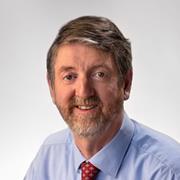Risk-Based Thinking for Extreme Events:
What Do Terrorism and Climate Change
Have in Common?

May 2, 2024 4:30 PM Eastern
RegisterMark G. Stewart
Distinguished Professor of Civil Engineering
School of Civil and Environmental Engineering
University of Technology Sydney
Abstract: Terrorism and climate change debates are often characterised by worst-case thinking, cost neglect, probability neglect, and avoidance of the notion of acceptable risk. This is not unexpected when dealing with extreme events. However, it can result in a frightened public, costly policy outcomes, and wasteful expenditures. The presentation will describe how risk-based approaches are well suited to infrastructure decision-making in these uncertain environments. The concepts will be illustrated with current research of risk-based assessment of climate adaptation engineering strategies including designing new houses in Australia subject to cyclones and extreme wind events. It will be shown that small improvements to house designs at a one-off cost of several thousand dollars per house can reduce damage risks by 80-90% and achieve billions of dollars of net benefit for community resilience – this helps offset some the predicted adverse effects of climate change for a very modest cost. The presentation will also highlight that there is much to be optimistic about the future, and in the ability of risk-based thinking to meet many challenges.
Biography: Mark G. Stewart is a Distinguished Professor of Civil Engineering, and Director of the Centre for Built Infrastructure Resilience at the University of Technology Sydney. He is an international leader in risk assessment, public policy decision making, and protective infrastructure for extreme hazards. He has applied risk assessment and probabilistic methods to a wide range of infrastructure/engineering systems, including terrorism and climate change. His ideas have been presented in four seminal books and many scientific and engineering papers, and has brought engineering and scientific expertise into the public policy domain. He is Editor-in-Chief of Structural Safety, a Fellow of the Australian Academy of Technology and Engineering, and President of the International Association of Protective Structures.
1 PDH credit will be awarded to eligible attendees, based on individual state requirements and completion of the 1-hour virtual lecture. This virtual lecture awarding the PDH requires you to attend the complete lecture and be logged on the webinar for a minimum of 55 minutes. Please note that this PDH is being issued by SEI Lehigh Valley and may or may not be eligible in other states for licensing requirements.


